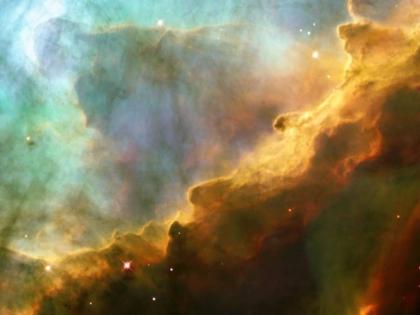NASA Shares Diwali Wishes, Shares Stunning Hubble Image of the Omega Nebula
By Lokmat English Desk | Updated: November 1, 2024 17:39 IST2024-11-01T17:38:50+5:302024-11-01T17:39:47+5:30
NASA, on the auspicious occasion of Diwali, shared an image of the Omega Nebula or Swan Nebula, one of ...

NASA Shares Diwali Wishes, Shares Stunning Hubble Image of the Omega Nebula
NASA, on the auspicious occasion of Diwali, shared an image of the Omega Nebula or Swan Nebula, one of the largest star-forming regions in the Milky Way galaxy, to extend wishes on the festival of lights. The US space agency took to its official X account to share the image with the caption, "Wishing you a joyful #Diwali! Just as the cosmos lights up our universe with endless wonder, Diwali illuminates our homes and hearts."
Earlier, NASA astronaut Sunita Williams shared Diwali greetings from space for the people celebrating festival in the US and around the globe, In a special video message transmitted from space, Williams reflected on her unique experience of celebrating Diwali 260 miles above Earth. She began with the greeting, "Greetings from the ISS," and extended her warmest wishes for a joyful Diwali, particularly to those celebrating at the White House.
Meanwhile, coming back to the M17 image shared by NASA, Hubble’s stunning image of a central portion of the nebula has been colorised to highlight certain wavelengths of light. Green represents oxygen, while red reveals hydrogen and infrared light.
Wishing you a joyful #Diwali!
— NASA (@NASA) October 31, 2024
Just as the cosmos lights up our universe with endless wonder, Diwali illuminates our homes and hearts. In this image, @NASAHubble captures a hotbed of star formation within M17, aka the Omega Nebula: https://t.co/5Kt96RzT0Upic.twitter.com/wLDcaQZBgk
According to the NSA, the Omega Nebula was discovered in 1745 by the Swiss astronomer Jean-Philippe Loys de Chéseaux. It was located 5,500 light-years from Earth in the constellation Sagittarius. The nebula has an apparent magnitude of 6 and can be seen with a pair of binoculars.
NASA's official website said that M17 contains one of our galaxy’s youngest star clusters, at only 1 million years old. However, many of the young stars in this cluster are impossible to see because of the gas and dust that surrounds them.
Open in app